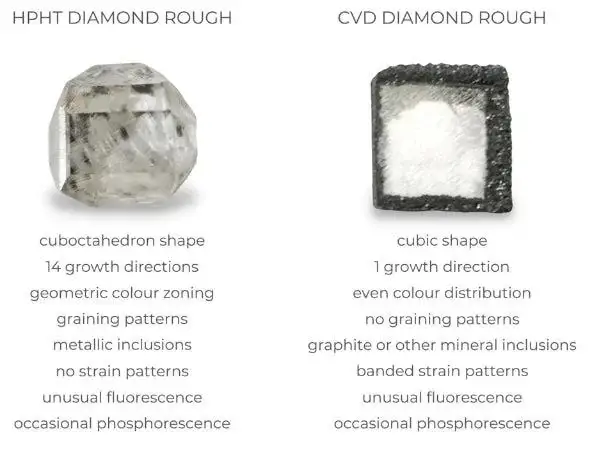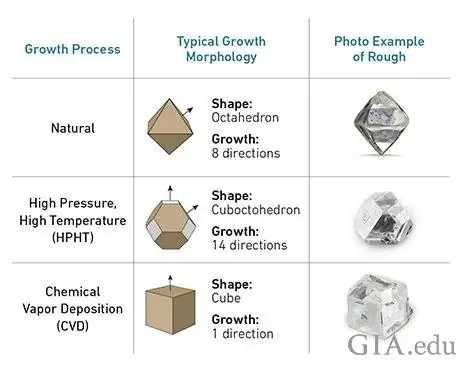My preferred analogy is air fryer versus convection oven. You’re going to get something very similar, but there are trade offs.
I’m not going to make roasted Brussel sprouts in my air fryer, I’m going to go high heat fast, and then a little low and slow, then high heat at the end, in my convection oven. I can’t control those variables as much in an air fryer. I don’t want caramelized roasted potatoes, so throwing them in an air fryer is just as tasty on an average night versus a special meal.

The Quick and Dirty Breakdown #
CVD is faster, cheaper, has a smaller carbon footprint, better for smaller stones. Has gained popularity in these online spaces because they’re cheaper (cost not value) – you’re not going to intentionally find an HPHT stone on Luvansh.
HPHT is slower, but more methodical. Will have less inclusions and is what is used for larger stones and colored lab diamonds. Has a much larger energy impact but you can control the variables better.
HPHT – High Pressure High Temperature
#
Let’s do HPHT first – High Pressure High Temperature.
This is a method that takes longer, a couple months versus CVD at a couple weeks. Labs are created from “seeds,” and HPHT is a one step growth process that as the name, is under high pressure and high temp but is not overly chemically processed to speed it up even more. They’re more rare to find these days in the competitive online loose lab diamond space unless you specifically ask a jeweler to source them, and in that case, you’ll pay more. I know jewelers who are in the camp of “natural or nothing” but have come around a little bit really demand HPHT if they’ll “allow” a lab. If you head over to the diamonds sub, you find purists who will only sell HPHT. HPHT mimics how diamonds are grown in the earth. They typically have less inclusions as a whole (but that only really matters when you get into SI clarity)
CVD – Chemical Vapor Deposit
#
Lower temperatures and speeding up the process using chemical vapors to make the carbon form faster. It can have some more inclusions – mostly people talk about striation lines, but again, we’re talking about SI and lower where you can see visible inclusions, so matters far less with higher clarity stones. These can sometimes tint brownish grey versus yellow into brown with HPHT, which is more common with natural diamonds. Again, we aren’t looking at anything low enough in the color range for it to matter. With CVD diamonds, there is less control for variables so they can produce larger stones faster, and it becomes up to the jeweler (or informed consumer) to look closely. When you get into step cuts where inclusions are far more likely to be seen even in high clarity stones, these striation lines you need to be aware of, but with brilliant cuts, you shouldn’t seen anything. Almost all CVD diamonds are treated post growth, which means they get about 15 minutes of HPHT to get rid of any tinting as much as they can. This is why you have G and H stones showing up so bright white as CVD stones when compared to what those color grades look like with natural diamonds.
Let me know if any of that doesn’t make sense because I’m just writing it out, but happy to go into my saved articles about it if you want to read more – it’s an interesting process seeing how things have evolved from HPHT being the only way to create labs to CVD over the years. Almost 80% of all lab diamonds are created using CVD now, and with HPHT post growth treatment, you’re getting a high quality stone either way.
TLDR; diamond purists tend to get up in arms over CVD – in my experience, it’s not warranted.



